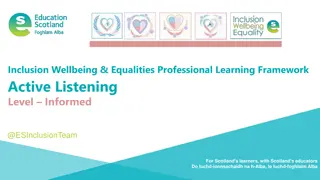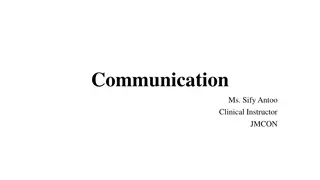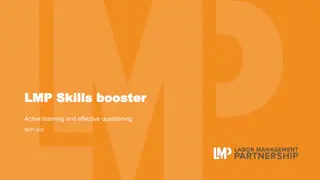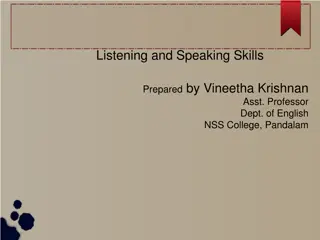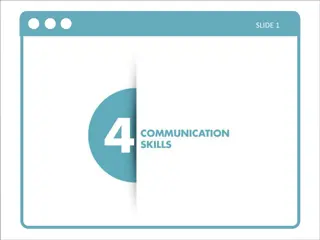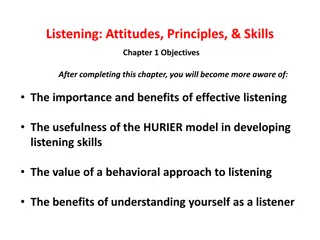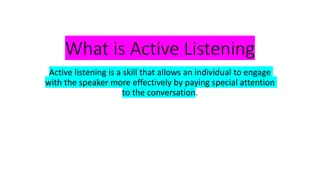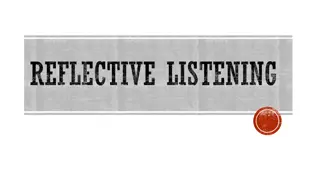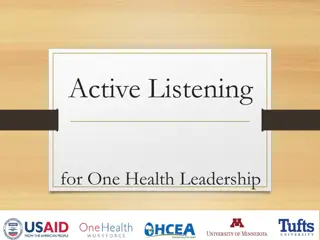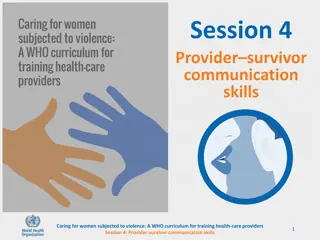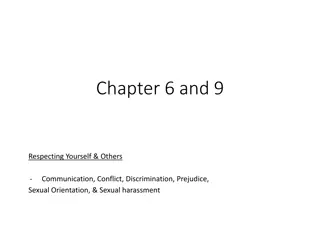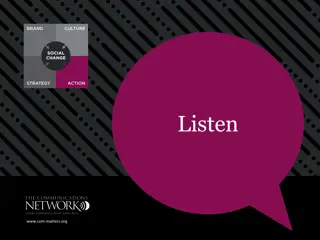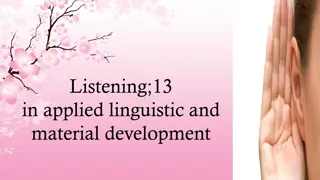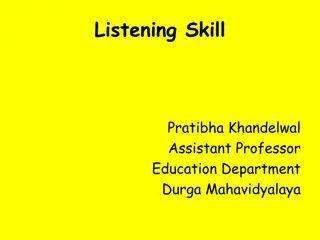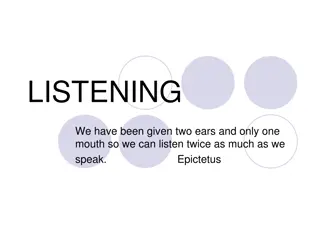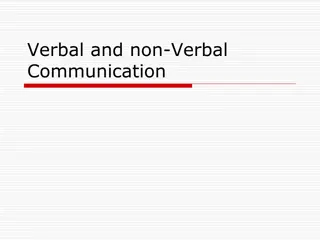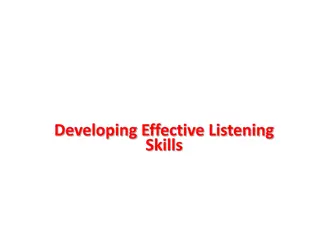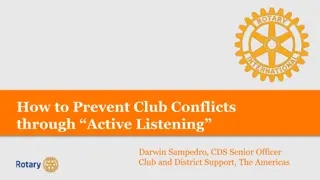Effective Communication through Active Listening Techniques
Enhance your communication skills by practicing active listening techniques such as maintaining empathy, utilizing effective pauses, minimal encouragers, and open-ended questions. By being fully engaged and understanding others' emotions, you can facilitate better connections and responses in various mental health disorders and crisis situations.
Download Presentation

Please find below an Image/Link to download the presentation.
The content on the website is provided AS IS for your information and personal use only. It may not be sold, licensed, or shared on other websites without obtaining consent from the author. Download presentation by click this link. If you encounter any issues during the download, it is possible that the publisher has removed the file from their server.
E N D
Presentation Transcript
ACTIVE LISTENING OFFICER CINDY BOYLE WESTERN MA CIT-TTAC LAW ENFORCEMENT COORDINATOR MONICA BELLUCCI, M.ED, LMHC WESTERN MA CIT-TTAC CLINICAL COORDINATOR
ACTIVE LISTENING WHAT MENTAL HEALTH DISORDERS/CRISIS SITUATIONS RESPONDTO ACTIVE LISTENING? ALL OF THEM! WHAT IS AT THE CORE OF ALL ACTIVE LISTENING? ATTACHMENT/CONNECTION!
ACTIVE LISTENING Being fully engaged while another person is talking to you. Listening with the intent to understand, rather than listening to respond. Listening to how someone may be feeling to understand whole picture LISTENING WITH ALL OF OUR SENSES!
ACTIVE LISTENING Introduction Provide your name State that you are there to help Empathy The ability to share understand and share feeling with another EX. I hear you , I want to understand , what you re saying makes sense to me Listen for emotions, validate emotions, minimize or ignore behaviors during this time. Ex do not say I understand you are upset but this is not the way to behave .
ACTIVE LISTENING Effective Pauses/planned ignoring Utilize silence to encourage the individual to fill space and disengage when individual is highly charged (silence is hard, its ok for you to be uncomfortable) Think about how the person s brain is functioning at that moment: Is the frontal lobe offline, can the individual understand your words and what you are asking them to do Is the person in crisis? Does that person have a diagnosed mental health condition? Should we slow down even more? Is there a tool we can use to help get their brain back online quicker (ice, sour foods, a drink of water)? Do we need to help them in regulating their breath?
Minimal Encouragers Utilized sounds, head nods, or short prompts to encourage more dialogue and convey that you are hearing them Open Ended Questions Utilize questions that begin with Who, What, Where, When, Why and How. These will typically lead to more dialogue. Try to stay away from questions that require a yes , no or one word answer.
ACTIVE LISTENING Using I statement Disclosing how you are feeling during your interaction can help Begin these statements with I feel to avoid becoming accusatory and eliciting a defensive response. EX: I am feeling concerned , I am feeling a bit confused can you help me understand Using We statements Never speak for command staff (telling someone they won t be arrested or have to go to court) Use we to get the subject involved in the conversation I think WE can work this out together
FINAL THOUGHTS Summary To begin, check that you are in a calm grounded space, slow breath and heartbeat. Utilize calm tone of voice in volume and inflection and not intimidating body language. Introduce yourself and state that you are there to help. State the individual s key points back to them to try and organize the conversation, using active listening skills to clarify your understanding and develop an action plan. Finally, try to have your statement be shorter than the individual initial dialogue.


